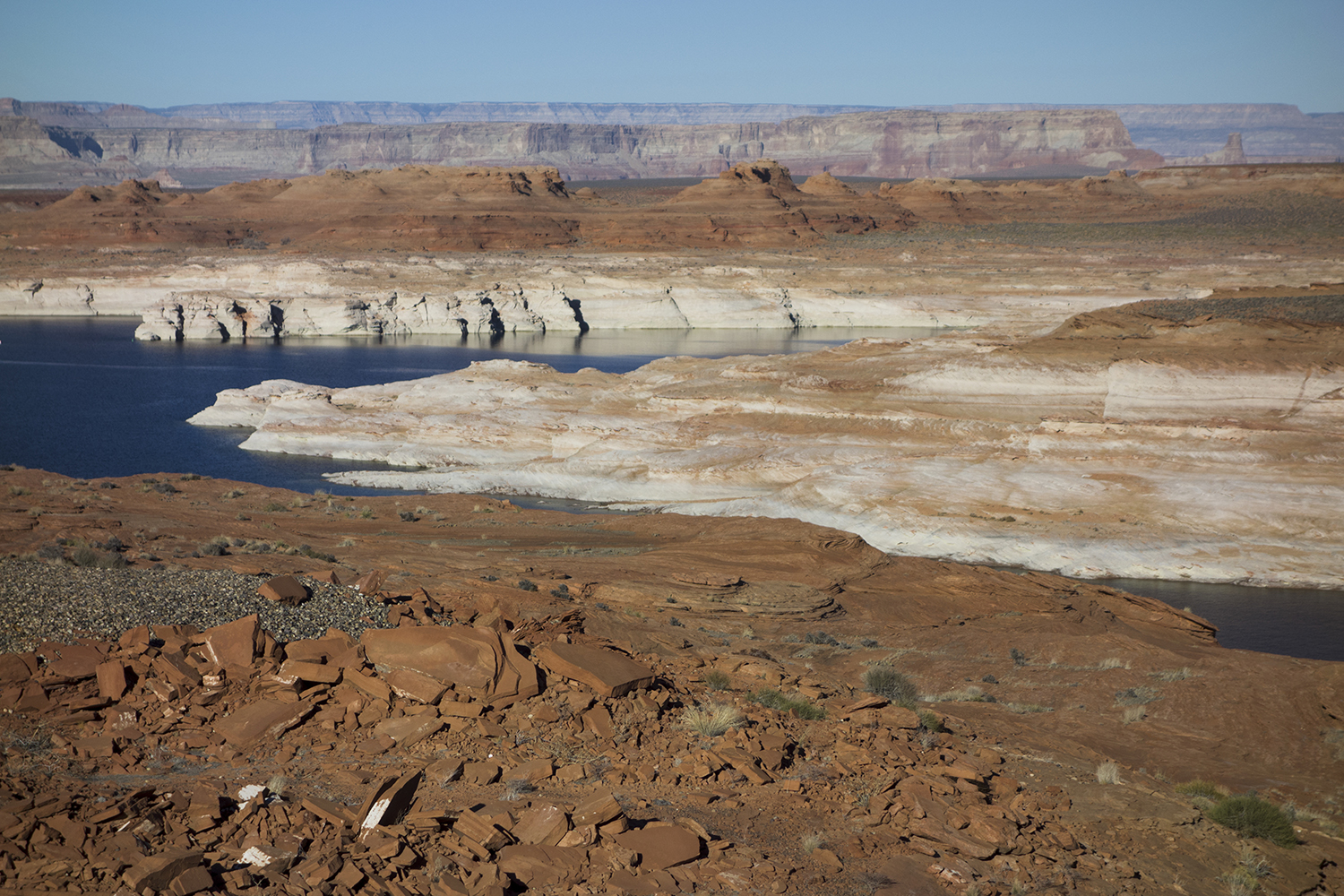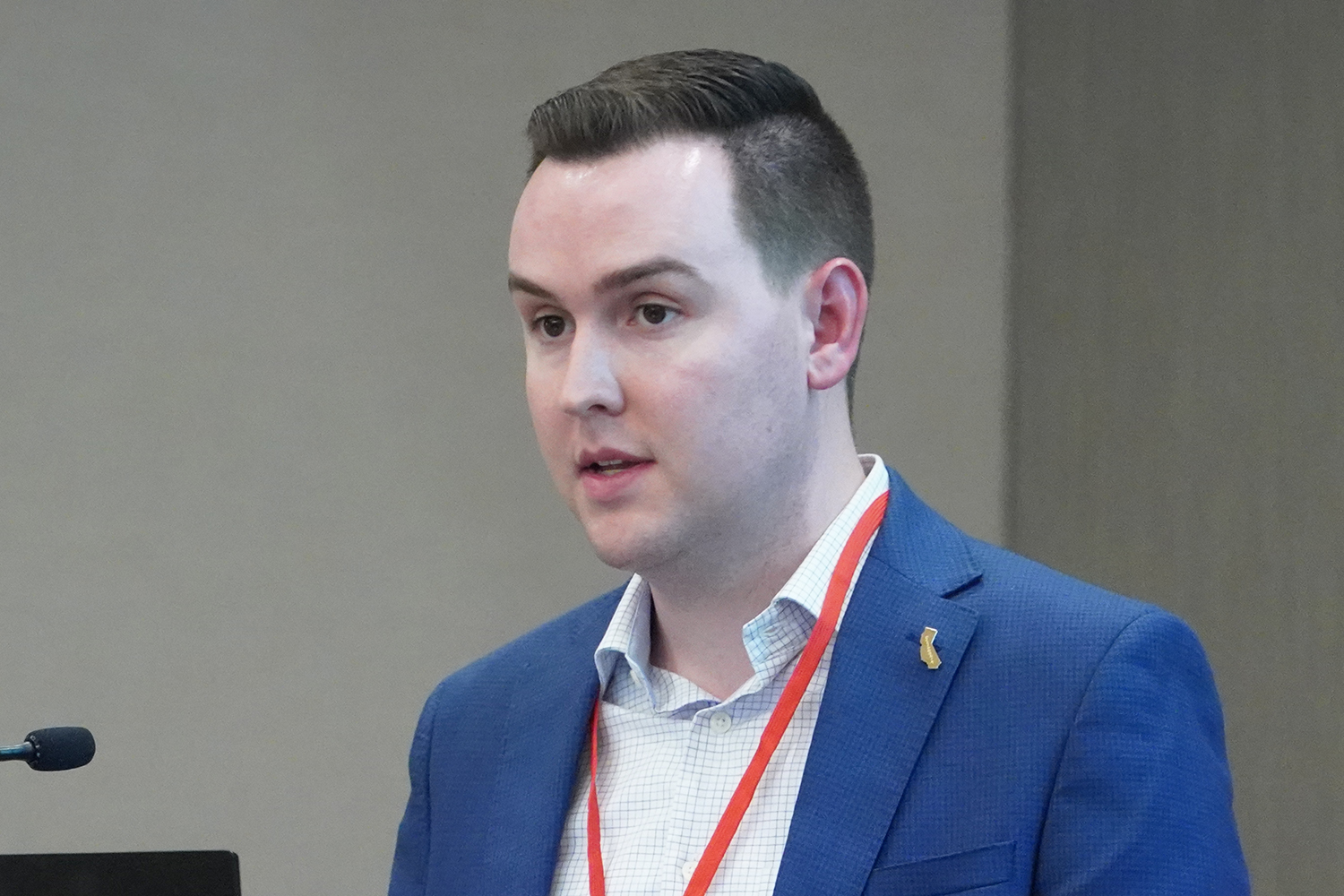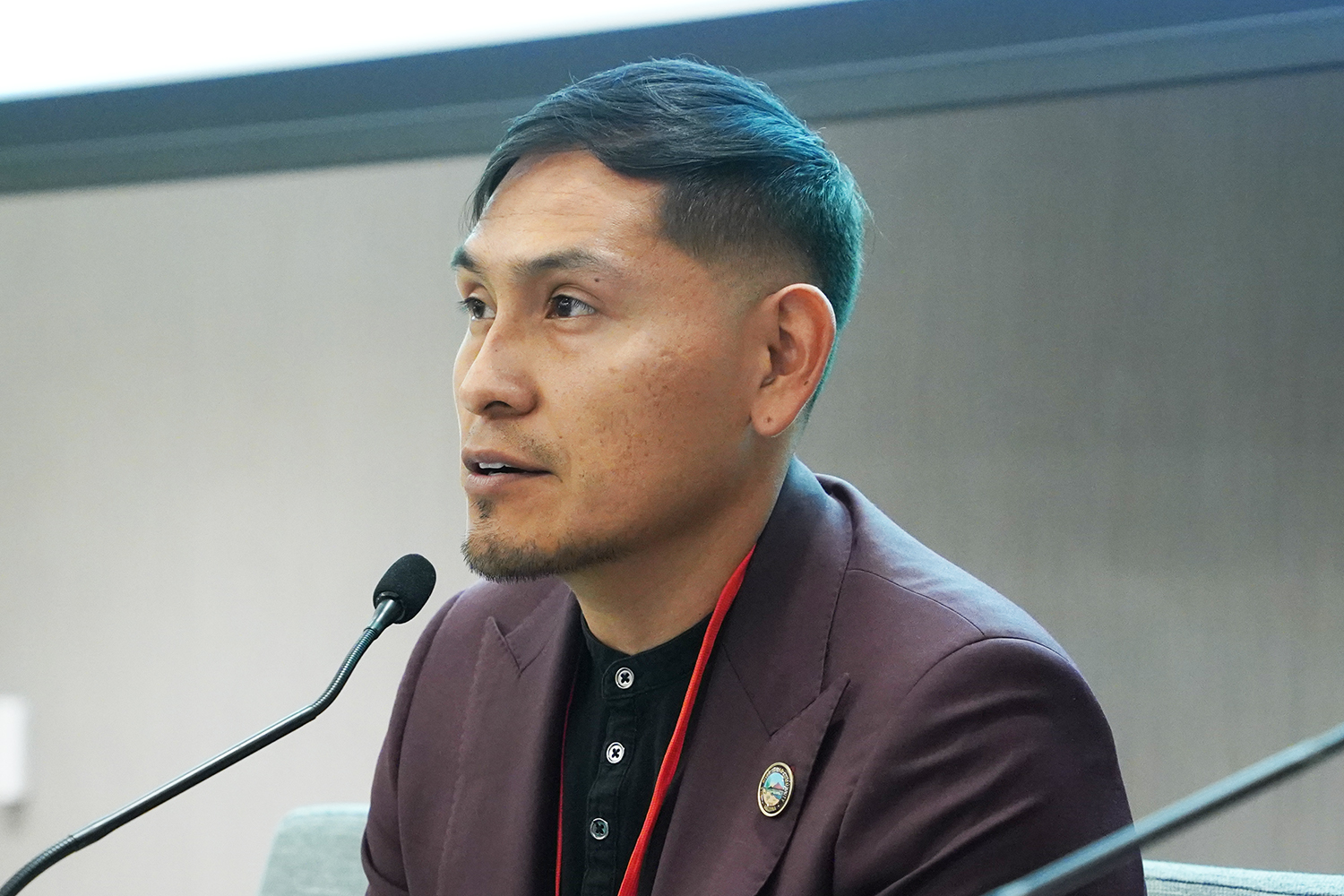Addressing the Colorado River crisis
The future of water in the Southwest was top of mind for participants and attendees at the 10th Annual Eccles Family Rural West Conference.

Low water levels reveal the rocky shores of Lake Powell, formed by the damming of the Colorado River in Glen Canyon National Recreation Area, near Page, Arizona. (Image credit: Getty Images)
Sustaining the American Southwest is the Colorado River. But demand, damming, diversion, and drought are draining this vital water resource at alarming rates.
The future of water in the region – particularly from the Colorado River – was top of mind at the 10th Annual Eccles Family Rural West Conference, an event organized by the Bill Lane Center for the American West that brings together policymakers, practitioners, and scholars to discuss solutions to urgent problems facing rural Western regions.
“The Colorado River is a critical source of water for Southern California, but its share of that resource is threatened by climate change and population growth in the river’s upper basin,” said Bruce Cain, a professor of political science and the Eccles Family Director of the Bill Lane Center for the American West.
Each year, the Rural West Conference rotates across the West to bring Stanford scholars into dialogue with the communities affected by the issues they study.
This year the conference, co-hosted with Arizona State University’s College of Liberal Arts and Sciences, was held March 27 in Tempe, Arizona, a city east of Phoenix.
How the Colorado River created the Southwest as we know it
Some have called the 1,450-mile long river – with its vast network of canals, tributaries, and dams – the region’s lifeblood and beating heart: It serves nearly 40 million people and supports countless economies, communities, and ecologies stretching from the Rocky Mountains to the Gulf of California.
It flows across seven states – in the upper basin are Colorado, New Mexico, Utah, and Wyoming, and in the lower, California, Arizona, and Nevada – and two countries, the U.S. and Mexico, and waters some 5 million acres of farmland.
How its water is distributed rests on an agreement from over a hundred years ago: the Colorado River Compact.
The compact transformed the Southwest, enabling infrastructure like the Hoover Dam and the Glen Canyon Dam to be built. It helped turn dry deserts like the Imperial Valley and Yuma into agricultural oases and made cities like Las Vegas, Los Angeles, Denver, and Phoenix possible.
But more water flows out of the Colorado River than in.
As Andrea K. Gerlak, a geographer from the University of Arizona, explained, when water rights were being decided, it had been a particularly wet season. “The data they had indicated that there was more water than there really was in the river,” said Gerlak.
Moreover, no one expected that each state would use the water they were allocated to the very last drop.
Meanwhile, a 20-year-old “megadrought” has only exacerbated the structural deficit. Water levels in America’s two largest reservoirs have dropped to troublingly low levels: Lake Mead is currently 37% full and Lake Powell, 32%.
While there have been a series of measures to conserve water from the Colorado River – including the Colorado River Interim Guidelines in 2007 – policymakers have recognized that more needs to be done. And with those interim guidelines set to expire in 2026, negotiations are underway.
Helping determine the river’s future is Stanford alumnus J.B. Hamby, ’18, who spoke about the work he is doing as the chairman of the Colorado River Board of California and the State of California’s Colorado River Commissioner.

J.B. Hamby, ’18, is the chairman of the Colorado River Board of California and the State of California’s Colorado River Commissioner. (Image credit: Geoff McGhee)
Hamby shared how he hopes to reach agreement around four critical areas: resolving the structural deficit, responding to climate change, managing the system as a whole, and expanding storage opportunities.
“Ultimately, the only way we get there is for everyone to collectively agree to do their part,” said Hamby.
Fighting for their water rights
Across the Phoenix metropolitan area, where this year’s conference took place, is a complex canal system built on top of irrigation infrastructure developed by Indigenous communities long before colonial settlers took over the territory – which Stanford alumnus Joseph Manuel Jr., ’18, a council representative for the Gila River Indian Community, discussed on a panel dedicated to Native American issues.
The Gila River, which flows some 600 miles through Arizona, is a major tributary of the Colorado River.
But in the 19th century, damming and diversion upstream cut off water supply to the Gila River Indian Community – leading to profound impacts still felt today.
“Water, especially in a desert, is absolutely crucial,” said Manuel. “Instead of focusing on thriving, we had to focus on survival, and that takes a tremendous mental health toll.”

Joseph Manuel Jr., ’18, is a council representative for the Gila River Indian Community. (Image credit: Geoff McGhee)
It also cut off a long history of traditional farming practices and culture.
As Manuel described, tribes – including his – have had to fight for their water rights ever since.
For example, it wasn’t until 2004 when the Arizona Water Rights Settlement Act was passed by Congress that the Gila River Indian Community’s rights to water were recognized.
But even when tribes are granted water rights, it doesn’t necessarily mean they are able to exercise them due to factors like cost.
Infrastructure to access water is expensive to build, which was a point Dwight Lomayesva, the vice chairman of the Colorado River Indian Tribes, emphasized in his presentation. He shared how on his own reservation the irrigation system is “old” and “dilapidated” – one study found it would cost $300 million to modernize the system.
Collaborative governance
With the interim guidelines set to expire in 2026, the Interior Department has established a negotiating process for representatives for all 30 tribal nations, the basin states that rely on the Colorado River Basin, and Mexico to negotiate a new agreement to protect the Colorado River.
This process is radically different from negotiations seen over a century ago.
“It’s been very helpful to initiate and formalize dialogue – there hasn’t been anything like this before,” said Hamby, who has been part of the process.
Hamby shared a photo from one of their recent meetings showing just how many people gathered to build consensus about what to do next.
But collaborative governance is complicated, particularly when it crosses multiple jurisdictions bound to various laws and legal precedents, said Gemma Smith, who received her PhD from Stanford in 2023 and is now an assistant professor at the University of Arizona.
“As we saw in that great photo of all of the stakeholders of the Colorado River … it very quickly can become a very complex process,” said Smith, who presented at the conference later in the day.
Smith shared some of the challenges but also opportunities collaborative governance can enable: New perspectives and ideas can bring innovation. But there must be a formalized process to ensure voices are part of the decision making process; otherwise, they may feel further excluded if their collaboration does not lead to any real outcomes.
As Cain emphasized, “California needs to negotiate a water compact revision with its neighboring states and tribes by 2026. That will not be easy.”
The conference also explored interstate migration between Arizona, California, and Texas – including a presentation by Stanford’s Preeti Hehmeyer, who discussed findings from a study she co-authored with Cain on population trends. There was also a panel about economic and policy issues at the U.S.-Mexico border.
Michael Crow, president of Arizona State University, delivered the keynote address.
The Bill Lane Center for the American West is part of the School of Humanities and Sciences.
Cain is also the Charles Louis Ducommun Professor in the School of Humanities and Sciences and a professor of environmental social sciences at the Stanford Doerr School of Sustainability. He is a senior fellow at the Stanford Woods Institute for the Environment and at the Stanford Institute for Economic Policy Research (SIEPR).
Hehmeyer is the managing director of the California Policy Research Initiative (CAPRI), which is part of SIEPR.